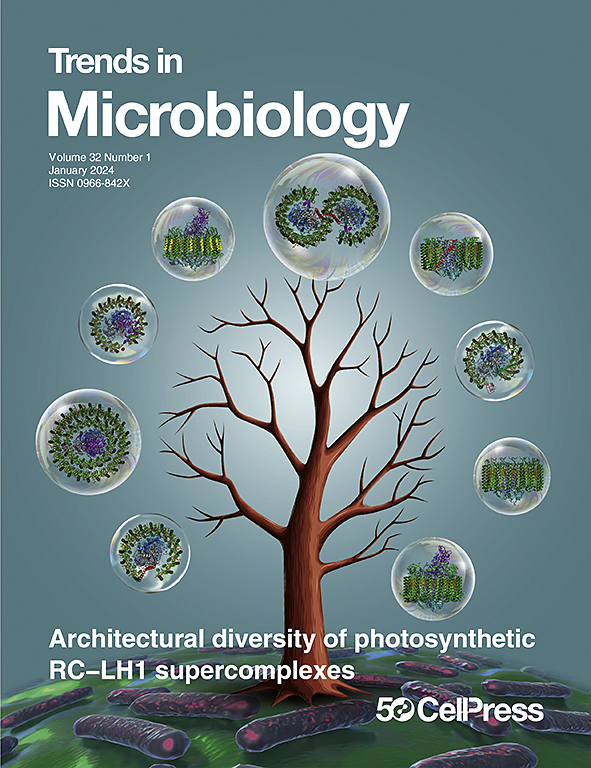并不是所有的rna对于抗病毒rna ISG20都是一样的。
IF 14
1区 生物学
Q1 BIOCHEMISTRY & MOLECULAR BIOLOGY
引用次数: 0
摘要
ISG20是一种广谱抗病毒蛋白,能够特异性降解病毒RNA。在这里,我们研究了病毒为逃避isg20介导的限制而开发的不同策略,揭示了这种外切酶如何区分自我和非自我rna,并强调了许多尚未解决的问题。本文章由计算机程序翻译,如有差异,请以英文原文为准。
Not all RNAs are created equal for the antiviral RNase ISG20.
ISG20 is a broad-spectrum antiviral protein capable of specifically degrading viral RNA. Here, we examine the different strategies developed by viruses to evade ISG20-mediated restriction, shedding light on how this exonuclease distinguishes between self and non-self RNAs, and highlighting the many questions that remain unanswered.
求助全文
通过发布文献求助,成功后即可免费获取论文全文。
去求助
来源期刊

Trends in Microbiology
生物-生化与分子生物学
CiteScore
25.30
自引率
0.60%
发文量
193
审稿时长
6-12 weeks
期刊介绍:
Trends in Microbiology serves as a comprehensive, multidisciplinary forum for discussing various aspects of microbiology, spanning cell biology, immunology, genetics, evolution, virology, bacteriology, protozoology, and mycology. In the rapidly evolving field of microbiology, technological advancements, especially in genome sequencing, impact prokaryote biology from pathogens to extremophiles, influencing developments in drugs, vaccines, and industrial enzyme research.
 求助内容:
求助内容: 应助结果提醒方式:
应助结果提醒方式:


